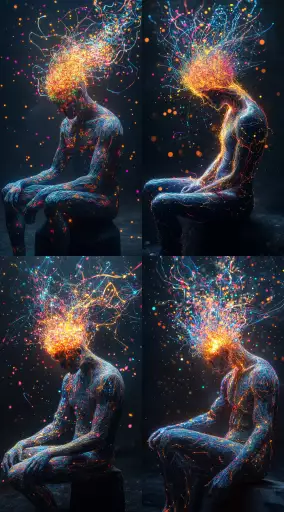Explore the Best AI Image Gallery

Weaving Creativity: How IoT and Smart Homes are Transforming Artistic Expression
The rise of the Internet of Things (IoT) and the proliferation of smart homes have ushered in a new era of interconnectedness, impacting nearly every facet of our lives. The creative industry, known for its constant evolution and embrace of innovation, is no exception. This convergence of technology and artistic expression is giving birth to exciting new possibilities, blurring the lines between physical and digital realms, and redefining the very nature of creativity.
Smart Homes as Creative Hubs
Imagine a home that not only caters to your comfort but also serves as a dynamic canvas for creative exploration. Smart homes equipped with IoT sensors, actuators, and voice-activated assistants are transforming into immersive environments where art can come alive in unprecedented ways.
- Interactive Installations:
- Personalized Experiences:
- Collaborative Spaces:
Smart lighting systems can be programmed to react to music or movement, creating mesmerizing visual displays that enhance artistic performances. Imagine a sculpture that changes color based on the audiences emotions or a painting that responds to touch with shifting patterns and textures.
IoT devices can collect data about your preferences and tailor creative experiences accordingly. A smart home could curate playlists that inspire you, suggest new art pieces based on your tastes, or even generate personalized poems or stories.
Smart homes facilitate collaboration by connecting artists with each other and their audiences in real time. Imagine a virtual gallery where visitors can interact with artworks remotely, participate in creative workshops, or share their own creations.
The Creative Toolkit of Tomorrow
Beyond the smart home environment, IoT devices are empowering artists with new tools and techniques to express themselves:
- Wearable Sensors:
- Smart Materials:
- Augmented Reality (AR) & Virtual Reality (VR):
Artists can utilize wearable sensors to capture their movements, emotions, and even brainwaves, translating these physiological signals into unique artistic expressions. Imagine a dancer whose movements control light projections or a musician whose emotions influence the composition of a melody.
IoT-enabled materials are constantly evolving, responding to stimuli like temperature, light, or sound. Artists can incorporate these dynamic materials into sculptures, installations, or clothing, creating works that transform and evolve over time.
AR and VR technologies are blurring the lines between physical and digital worlds, offering artists new platforms for creation and interaction. Imagine an AR installation that overlays fantastical creatures onto a real-world cityscape or a VR experience that transports viewers into a surreal dreamscape.
Ethical Considerations: Navigating the Uncharted Waters
As IoT and smart homes become increasingly integrated into our lives, its crucial to consider the ethical implications of their use in the creative industry:
- Data Privacy & Security:
- Algorithmic Bias:
- Access & Equity:
IoT devices collect vast amounts of data about users behaviors, preferences, and even personal information. It is essential to ensure that this data is handled responsibly, securely, and with user consent.
AI algorithms used in creative tools can perpetuate existing biases if not carefully designed and monitored. Artists and developers must strive for inclusivity and fairness in the development and deployment of these technologies.
The cost of IoT devices and smart home technology can create barriers to access for some artists and communities. It is important to promote equitable distribution of these resources and ensure that everyone has the opportunity to benefit from this creative revolution.
Future Trends: The Unfolding Canvas
The intersection of IoT, smart homes, and the creative industry is still in its early stages, with boundless potential for innovation:
- Hyper-Personalization:
- Immersive Storytelling:
- Community-Driven Creation:
AI-powered tools will enable artists to create truly personalized experiences tailored to individual preferences and tastes.
Smart homes will become immersive storytelling environments, allowing audiences to step inside narratives and interact with characters and worlds in unprecedented ways.
IoT will facilitate collaboration between artists from around the globe, fostering a more interconnected and vibrant creative community.
As technology continues to evolve, we can expect to see even more groundbreaking applications of IoT and smart homes in the creative industry. This convergence promises to empower artists, inspire new forms of expression, and redefine our understanding of creativity itself.